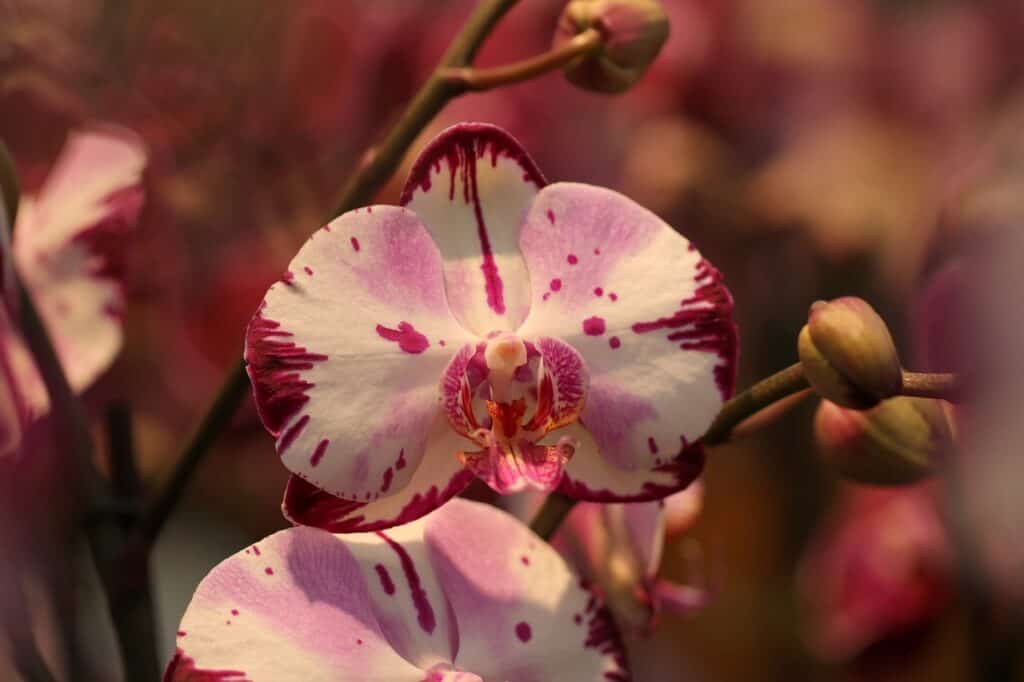Orchids are one of the most beautiful plants in the world, and many people choose them as their houseplant choice because of their delicate beauty. However, when it comes to blooming, these exotic plants can be quite challenging. Sometimes, despite your best care efforts, your orchids may seem like they have lost their blooming mojo.
The good news is, getting your orchids to rebloom is not impossible. By understanding their blooming cycle and creating the optimal environment, you can encourage your orchids to bloom again. In this article, we will share tips and tricks on how to get your orchids to rebloom and thrive.

Understanding the Blooming Cycle of Orchids.
The first step to getting your orchids to rebloom is to understand their blooming cycle. Orchids are different from typical houseplants because they don’t follow a standard blooming season. Orchids have different blooming cycles based on their species.
1. Knowing the Different Types of Orchids.
There are over 28,000 species of orchids globally, each with its unique blooming cycle. Some orchids bloom once a year, while others may bloom every few months. Understanding the species of orchid you have is crucial in creating the optimal environment for it to rebloom.
2. Understanding the Natural Blooming Season.
Most orchids have a natural blooming cycle that occurs in the fall or winter. During the summer months, orchids often go through a resting period to prepare for their blooming cycle. During this rest period, the orchid will stop growing, and you’ll notice it shed its older foliage. It is best to avoid fertilizing your orchid during this resting period and to water sparingly.
Creating the Optimal Environment for Orchids to Bloom.
To get your orchids to rebloom, you must create an optimal environment. Orchids have specific needs when it comes to lighting, temperature, humidity, and watering.
Light and Temperature Requirements.
Orchids need sufficient light and temperature to bloom. Most orchids require a minimum of 12 hours of light per day to bloom successfully. However, direct sunlight may be too intense for some species of orchids, so it’s best to provide bright, indirect light.
Temperature is another crucial factor. Most orchids need a temperature range of between 18 – 24°C (65 – 75°F) during the day and a slight drop in temperature at night to encourage blooming. Keep in mind that different species of orchids may have different temperature requirements.
Humidity and Watering Needs.
Orchids need high humidity levels to thrive, and the ideal humidity range for most orchids is between 50 – 70%. You can increase humidity levels by placing a tray of pebbles filled with water under the pot or purchasing a humidifier to maintain the ideal humidity levels.
Overwatering is one of the most common mistakes orchid owners make. Orchids need proper drainage as waterlogged roots are highly susceptible to rot. You should avoid watering your orchid on a schedule and only water when the top of the potting mix is dry to the touch.

Practical Tips for Orchids to ReBloom
Now that we’ve covered how to create an optimal environment for your orchid let’s take a look at some practical tips to get your orchids to rebloom.
Repotting and Fertilizing Techniques.
Repotting your orchid is essential if it has outgrown its current container. Repotting is also beneficial if you want to refresh the potting mix or have noticed roots starting to die back. Repotting your orchid before the blooming season can stimulate new growth, which can lead to blooming.
Fertilizing your orchid is equally important, but it’s essential to use the right type of fertilizer. A balanced, water-soluble fertilizer with a 20-20-20 or 30-30-30 NPK ratio is sufficient for most orchids. During the blooming season, you can use a high-phosphorus fertilizer to encourage blooming.
Identifying Common Pests and Diseases and How to Treat Them.
Orchids are not immune to pests and diseases. Some common orchid pests include spider mites, scale insects, and mealybugs. To avoid pests, you should inspect your orchid regularly and isolate any infected plants promptly.
Diseases, such as bacterial or fungal infections or rot, may occur if your orchid is overwatered or the humidity levels are too low. Proper watering and maintaining optimal humidity can help prevent these issues. If your orchid becomes infected, isolate the plant immediately, and cut off any infected parts.
Conclusion
Getting your orchid to rebloom may take time, patience, and some trial and error. Remember to identify the species of orchid you have, and create the optimal environment to encourage blooming. Follow practical tips such as repotting and fertilizing and watch out for common pests and diseases. Soon your orchid will bloom again, and you can enjoy its delicate beauty all year round.

